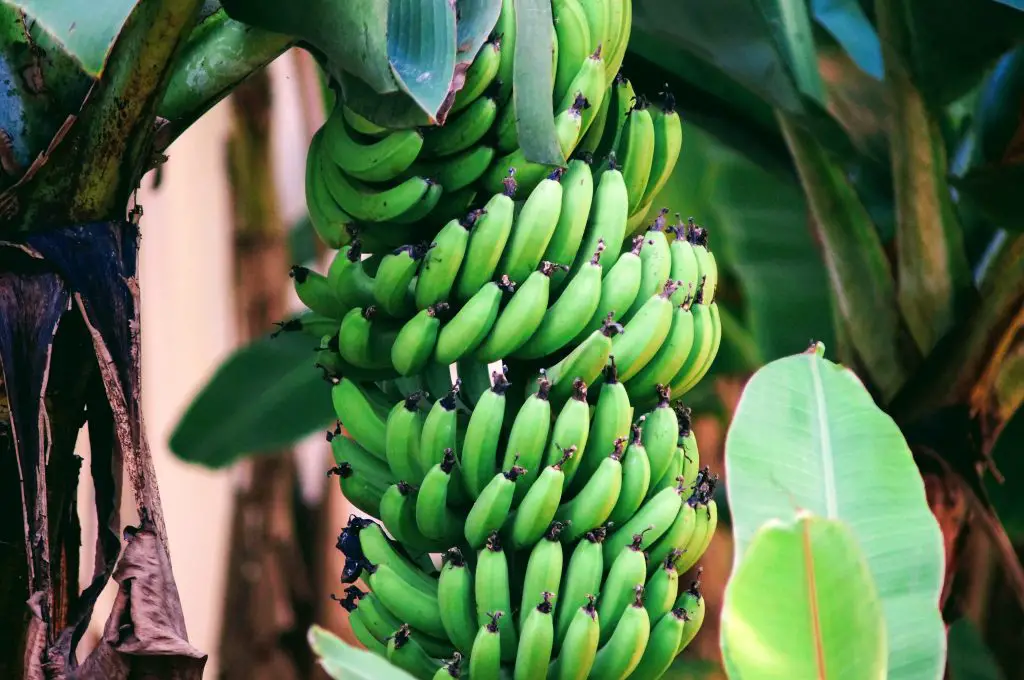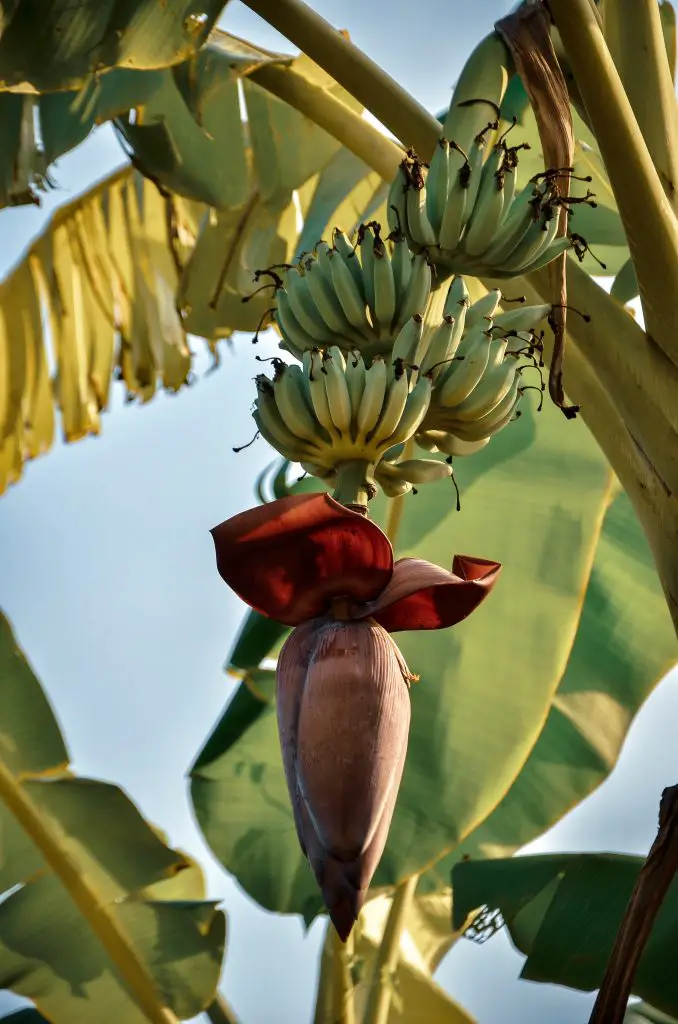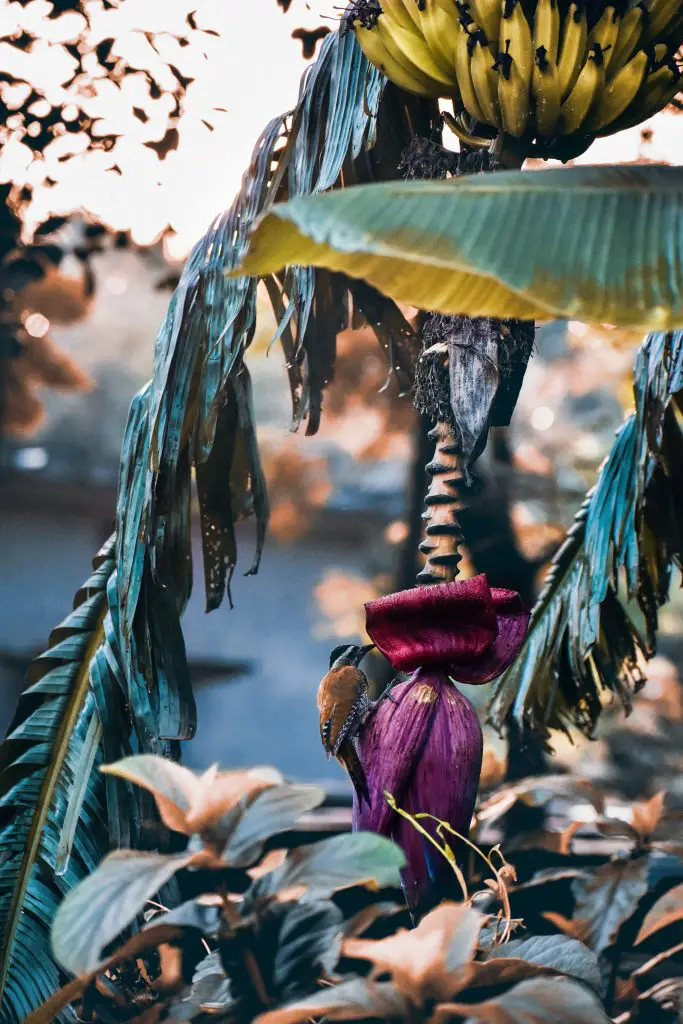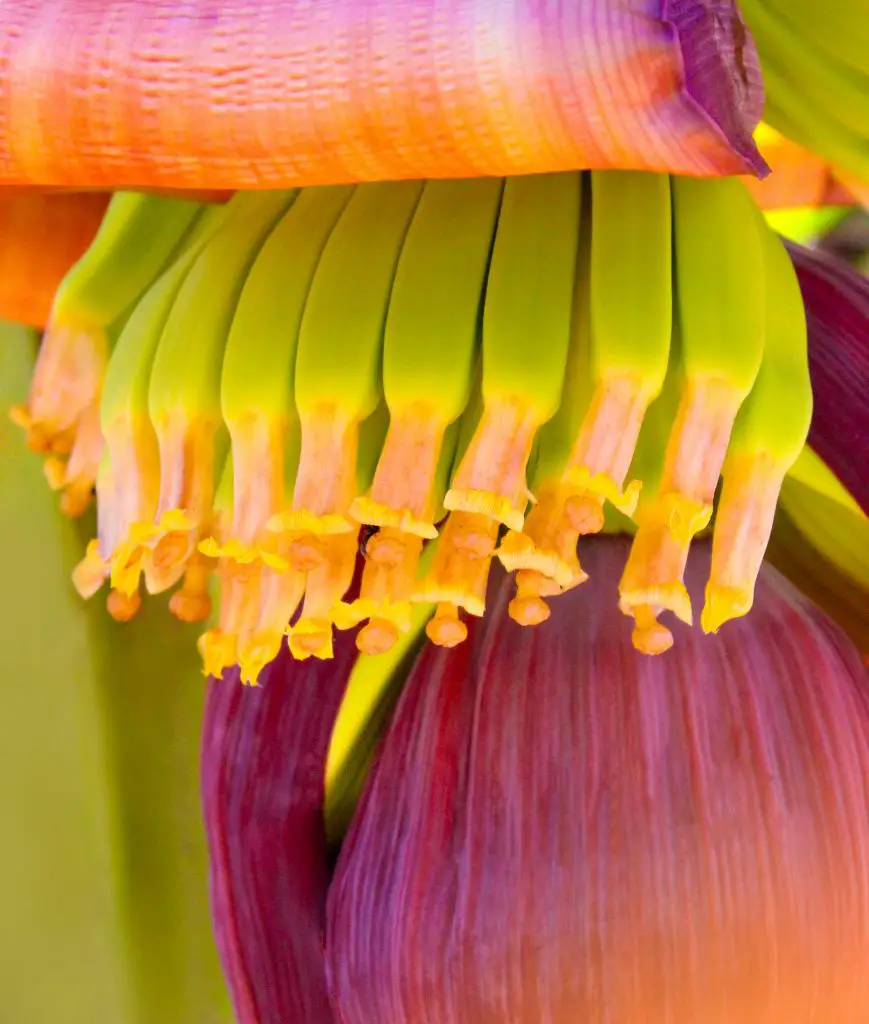How Long Does It Take For A Banana Tree To Bear Fruit largely depends upon the region in which you are growing the tree. In tropical and subtropical regions, a Banana tree will take approximately 9 to 12 months to produce fruit. However, in cooler climates where the fruiting is not as rapid, it can take up to 3 Years for the first bunch of Bananas to be produced, because the development of the stems takes longer. Additionally, fruiting can also be delayed if there is insufficient water available to the tree to allow it to develop its stalks.
In cooler regions to ensure that you are able to harvest fruit every single year, a different approach needs to be taken to the management of the plant. Due to the relatively slow speed that the stalks grow, it is necessary to ensure that the plant has multiple stalks on the plant of different ages. This ensures that the plant always has at least one or 2 stalks approaching flowering. This is different to the approach taken by commercial growers which allow only a single trunk to grow.
This means that you may end up with 200 or 300 bananas in a season, which at first glance may seem to suggest that you will be throwing out a lot of overripe fruit. However, I have found that it is possible to delay the ripening of the fruit by leaving it on the stalk until you need it. Using this method it is possible to have bananas for 2 to 3 months of the year.
How To Grow Banana Trees
Banana trees are native to South East Asia and are traditionally grown commercially in tropic and subtropic locations. However, it is possible to grow them in cooler climates successfully, provided that a suitable variety is selected. One example of a cold-tolerant variety is the Japanese Fiber Banana, which will tolerate temperatures as low as -8°C (18°F), which makes it possible to grow it in Zone 8.
In Zone 8 and 9, you may struggle to get fruit, however, it is certainly possible to get a good crop if you live in Zone 10. I live in Zone 10 and was able to harvest 4 bunches this year, and it was enough to keep us supplied with Bananas for 2-3 months.

Location
When deciding to grow this plant, the first consideration is the location. Bananas prefer a moist sunny position, that is sheltered from the wind. Banana plants have huge leaves, that can be up to 2 ft (60cm) wide, and are susceptible to wind damage. The position also needs to be able to accommodate a fairly large plant, as Bananas will grow up to 15 to 20ft (4-6 m) tall. The ground space required is 10 to 20 sqft (1-2 sqm).
The soil and the location should be moist, well-drained and contain a lot of organic matter. It is recommended, that lots of compost and fertiliser be added to the soil, before planting. The ideal soil pH is 6 to 7, to learn more about how to test and adjust pH, go to https://planyourpatch.com/why-is-ph-important-in-soil/.
The other key consideration is the water supply to the chosen location, as Banana trees originate in tropical locations and require a lot of water. The stems produced by the plant are extremely heavy because they are constructed using cells that are reminiscent of the honeycomb structures, found in a beehive. Each cell contains water, which explains the weight.
To avoid the need for frequent watering, it is a good idea to divert greywater from a bath or washing machine, onto the plant. However, if manual watering is required, it is best to water weekly, to ensure the soil stays moist.
Selecting the Variety and Planting
There are approximately 500 varieties of Banana plants that exist in the world, with the most common kinds being Dwarf Cavendish, Valery and Williams Hybrid Bananas. All of these varieties will perform well, in tropical and subtropical climates. However, for those living in cooler climates, there is a selection of varieties that are known to grow well in Zone 10 and below.

Dwarf Cavendish is a smaller growing version of the main commercial variety sold in supermarkets, Cavendish. It crops well and reaches a height of 2.4m (8ft).
Dwarf Red Dacca is a variety that produces sweet Bananas that turn orange, as they ripen. It reaches a height of approximately 2m (7 ft).
Ducasse variety, which is also known as the Sugar Banana, is sweet as the name suggests, and has an excellent flavour. It will reach a height of 4m (13 ft).
Goldfinger variety is widely eaten in North America. It is a heavy cropper and is cold hardy. It will reach a height of 4m (13 ft).
Lady Finger variety produces a smaller fruit than most other varieties, but it is very sweet. It will reach a height of 3m (10 ft).
Pisang Ceylon variety produces very sweet Bananas, which are bright yellow when ripe. It will reach a height to 3m (10 ft).
Rajapuri is a very cold-hardy variety, that produces an excellent quality Banana. It crops well and reaches a height of 2.4m (8ft).
Valery is a variety the produces large crops of full-sized Bananas. It will reach a height of 4m (13 ft).
Once the variety to be planted has been selected and purchased, dig a hole that is around the depth of the pot the Banana seedling came in, and 30cm (1 ft) wider than the pot. Remove the plant from the pot, and plant it at the same level, as it was in the pot. Backfill with soil, firming the soil in with your heal as you go, and then water the plant well.

Caring For Banana Plants and Harvesting
The Banana plants generally require very little maintenance throughout the year, other than ensuring that the soil remains moist. Many books recommended that the Banana plants be fertilized with the California Rare Fruit Growers organization, providing the following advice;
“Spread the fertilizer evenly around the plant in a circle, extending 4 to 8 feet from the trunk. Do not allow the fertilizer to come in contact with the trunk. Feed container plants on the same monthly schedule, using about half the rate for outside plants.”
However, I have found that fertilising once a year, is absolutely adequate. This is best done, during the harvest period.
The harvest period typically occurs in Autumn, as each stem produces a large purple flower. The petals of the flower gradually unfurl to reveal the Bananas. In a good bunch, there will be 40 to 50 Bananas. After the Bananas appear, they will gradually swell in size, over a few weeks. The Banana will be ready to harvest when there is a slight colour change, but the Banana will still be, basically green.

At this point, remove the whole bunch from the tree and place it in a cool dark place. As you need Bananas, remove a cluster and bring them inside. It will take 1-2 weeks for the Bananas to ripen, before you can eat them. To accelerate this process, place them near an Ethylene producing fruit, such as Apples or Pears.
Once the fruit has been harvested from a stem, the stem needs to be removed from the plant. This can be done using a hand saw, however, this needs to be done with care, as the stems can be quite heavy. The safest way, is to remove the stem in sections.
The Banana plant will produce several suckers each year, that will form the new stem for the following year. In commercial operations, a single stem is allowed to grow, and the rest are removed. However, if you live outside of the tropics, it is entirely possible that it will take more than one growing season for the stem to produce the fruit, as such, it is a good idea to leave a few suckers on the plant. This will ensure that you have Bananas every year, in cooler climates.
Propagating Banana Plants
If you require additional plants, the easiest way is to propagate by division. The Banana plants may be divided, by separating the suckers from the rhizome, using a sharp spade. When dividing, make sure that the suckers have plenty of roots.
Relevant Articles
12 Tips To Boost Your Garden Output
10 Ways To Make Your Vegetable Garden Look Beautiful
7 Easy Steps To Creating An Orchard In Your Own Yard
